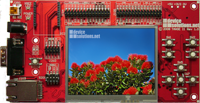There has been a lot of press regarding changes at Microsoft in the last few days. Today, Colin Miller clarified what the changes mean for the Micro Framework:
I need to correct a recent announcement of the demise of the Micro Framework. There are changes taking place on the team but they are all for the good.
First, the product is moving into the Developer Division (Server and Tools). This is a great fit for the technology and we are really looking forward to it. The move means that we will be fully aligned with the rest of the .NET groups and tools in building the uniform programming model from the sensors to servers.
The announcement that we are moving to some form of community direction and development including code access is accurate. We will investigate how to do that in the near term so stay tuned. For now however, the current products are available and continue to be supported as before.
I am really excited about the potential of really accelerating the changes in the industry that we see coming. I hope that you are as excited as I am. Please let me know if you have any questions.
For those concerned about the level of support from Microsoft, I can confirm that we are still receiving support and that Microsoft is working on a number of issues we have reported (including the SD card corruption issue).
On a personal note, I understand some of the team will be looking for work. I have enjoyed working with many members of the Micro Framework team over the last couple of years and wish them all the best for finding work.
Device Solutions is (of course) still committed to the .NET Micro Framework and as excited as Colin about being a part of it!



